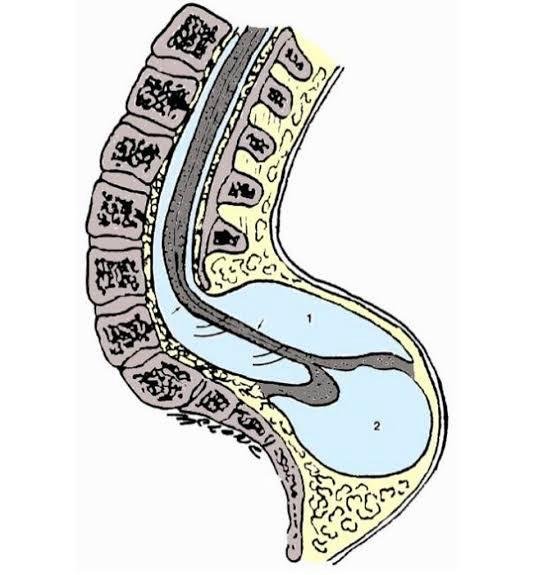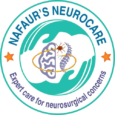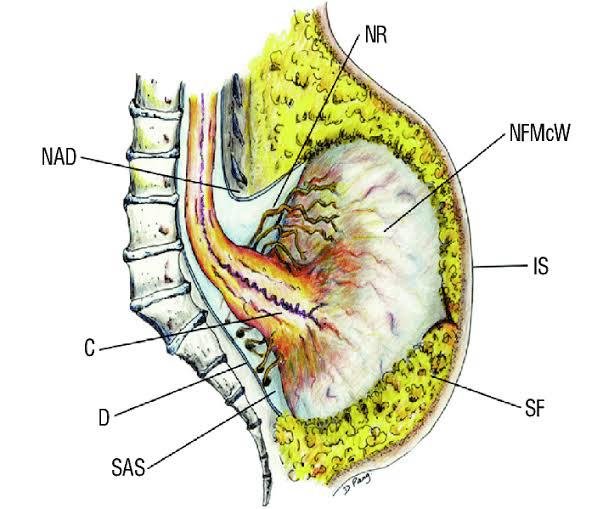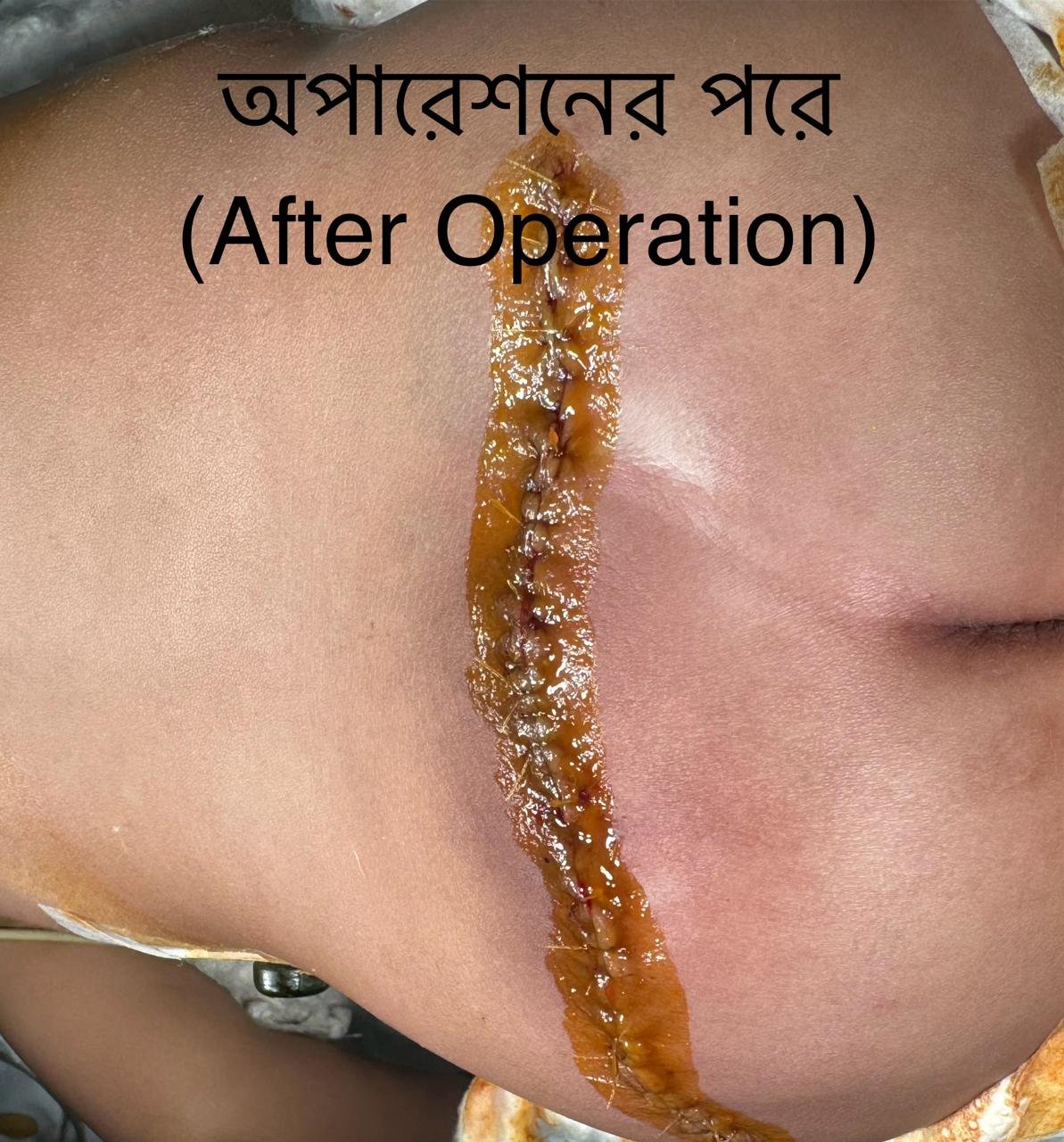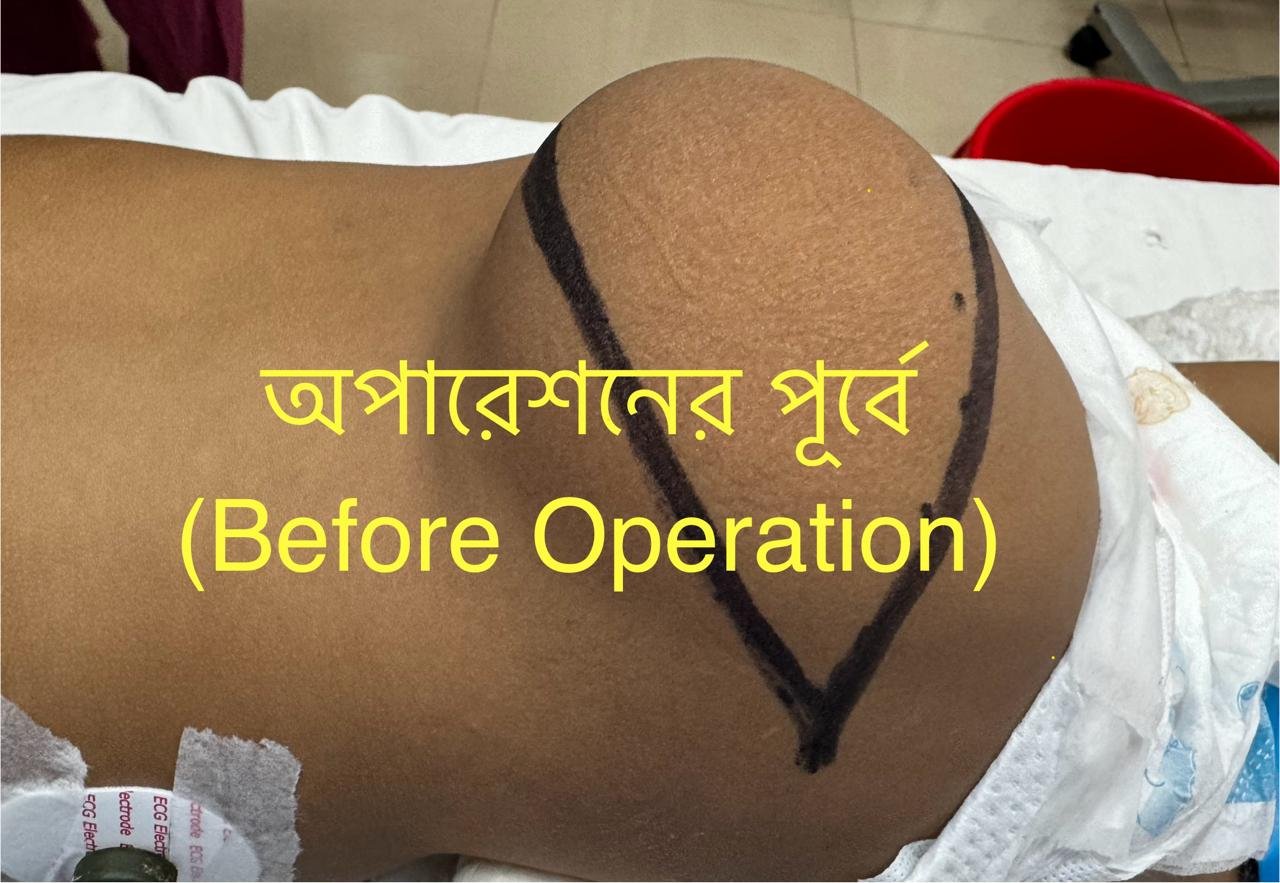Terminal Myelocystocele
Terminal Myelocystocele
Terminal Myelocystocele (TMC) is a rare congenital spinal cord malformation characterized by a fluid-filled sac at the lower back that contains a dilated central canal of the spinal cord extending into a meningocele. It is typically located at the lumbosacral or sacrococcygeal region, and often presents at birth as a swelling or protrusion on the lower back.
In the context of Bangladesh, where public awareness and neonatal spinal screening are limited, TMC cases are often diagnosed late, increasing the risk of permanent neurological damage. Timely diagnosis and surgical intervention are essential to prevent irreversible complications such as paralysis, bladder dysfunction, or orthopedic deformities.
🔍 Clinical Features and Diagnosis
Children with Terminal Myelocystocele may present with:
A soft, translucent sac or swelling on the lower back
Skin covering over the swelling (unlike open spina bifida)
Bladder and bowel dysfunction
Leg weakness, abnormal gait, or foot deformities
Delayed milestones or clumsiness in walking
Tethered cord syndrome symptoms
In Bangladesh, this condition is sometimes misidentified as a simple cyst, lipoma, or meningocele due to its skin-covered appearance. Delayed referral for pediatric neurosurgical evaluation is a common challenge.
🧪 Diagnostic Tools:
MRI of the spine – Essential for detecting the myelocystocele, spinal cord termination, tethering, and associated abnormalities
Ultrasound – Useful in neonates before closure of the posterior vertebral arch
Urodynamic study – For children presenting with urinary incontinence
X-rays – May reveal bony anomalies in the sacral region
At NINS and Bangladesh Paediatric Neurocare Centre, Dr. Nafaur Rahman ensures high-quality MRI imaging, early diagnosis, and detailed case evaluation for complex spinal anomalies like TMC.
🧠 Associated Anomalies
Terminal Myelocystocele may coexist with:
Hydrocephalus
Chiari malformation
Syringomyelia
Split cord malformation
Anorectal malformations
Urogenital anomalies
A multidisciplinary approach is essential, which Dr. Nafaur coordinates across pediatric specialties to ensure the best outcomes in Bangladesh's setting.
🛠️ Surgical Treatment of Terminal Myelocystocele
Surgery is the mainstay of treatment and should be performed early—preferably in the first few months of life to prevent deterioration.
🔧 Surgical Objectives:
Microsurgical untethering of the spinal cord
Resection of the cyst and surrounding meningocele sac
Reconstruction of the spinal canal
Preservation of functional neural tissue
Repair of dural defects to prevent CSF leak
“Microsurgical correction of terminal myelocystocele requires extreme precision. In Bangladesh, we are bridging the treatment gap with world-class surgical care for even the rarest spinal conditions.”
— Dr. Md. Nafaur Rahman
Using advanced intraoperative neuromonitoring (IONM) and microsurgical tools, Dr. Nafaur Rahman has successfully operated on several complex pediatric spinal anomalies with excellent postoperative outcomes.
🏥 Postoperative Care & Follow-up in Bangladesh
Following surgery, the child is managed with:
Monitoring for wound healing and signs of infection or CSF leak
Neurological evaluation for recovery of leg movement and bladder control
Regular imaging (MRI) to ensure no retethering or cyst reformation
Physiotherapy for muscle strength and mobility
Urological support, if bladder issues persist
At Bangladesh Paediatric Neurocare Centre, coordinated care is provided with urologists, physiotherapists, and pediatricians under Dr. Nafaur’s leadership.
🌟 Prognosis and Long-term Outlook
If diagnosed early and treated appropriately, children with terminal myelocystocele can:
Achieve normal or near-normal motor development
Regain or retain bladder and bowel control
Avoid severe deformities of the spine or limbs
Participate in regular schooling and social activities
However, late presentation, especially in rural Bangladesh, is linked to poor neurological recovery, highlighting the need for early referral and awareness.

